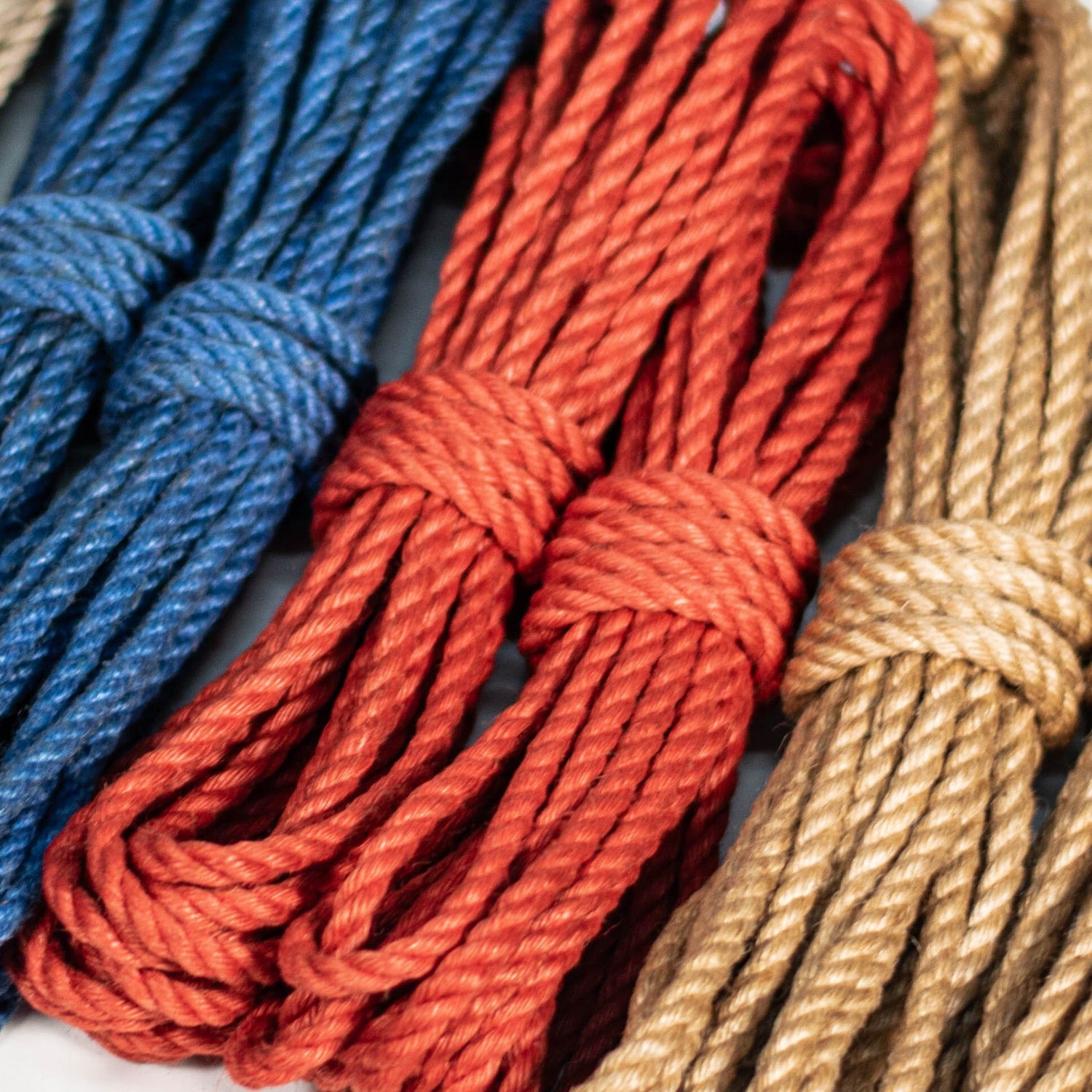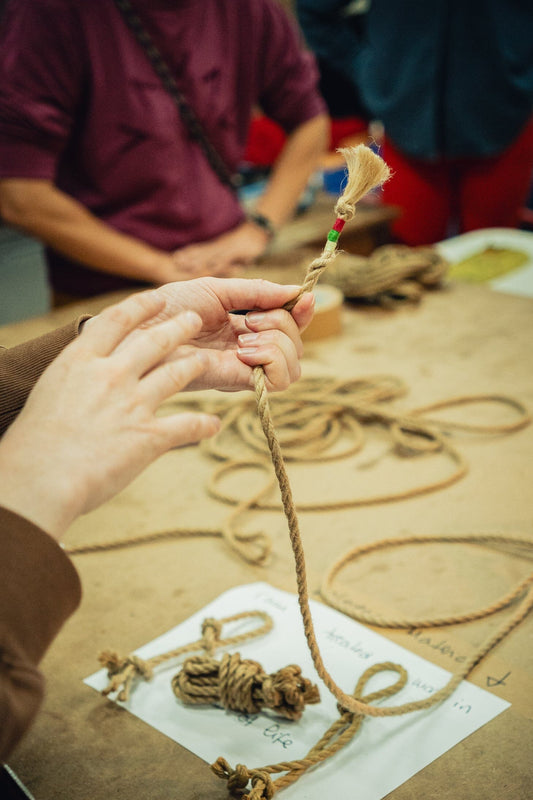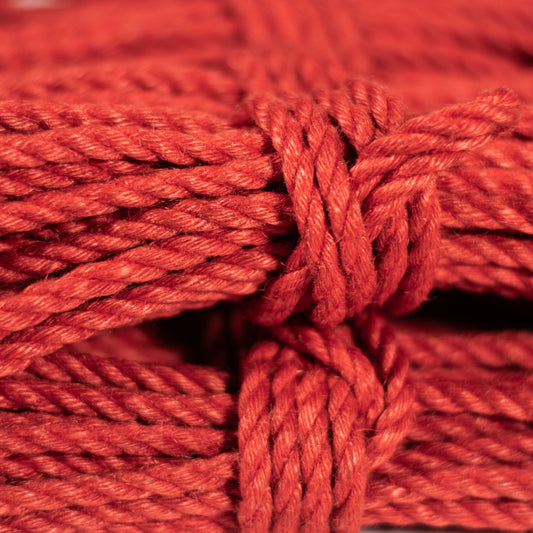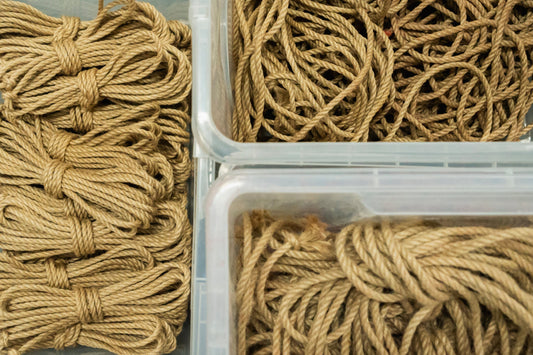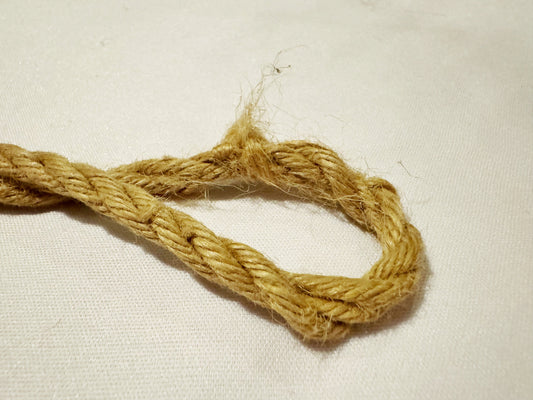The number of jute ropes you should purchase depends on several factors, including the type of shibari you plan to practice, the complexity of the ties, the length of each rope, and your personal preferences. Here are some guidelines to help you decide:
Basic Guidelines:
Length of Each Rope:
The standard length for shibari ropes typically ranges between 7-8 metres (approximately 23-26 feet). The majority of the ropes we sell are 6mm diameter, 7.5-metre long jute ropes.
While it might seem tempting to use ropes that are the perfect length for the person being tied, it's generally more efficient to join ropes when needed. We offer bags of assorted short ropes specifically for this purpose.
Complexity of Ties:
-
Just getting started?
For simple chest, leg, or hip harnesses, 2 to 3 ropes should be sufficient. We've put together a First Shibari Rope Kit specifically for beginners. -
Floor work and partial suspension:
For full-body harnesses and more complex ties, we recommend having at least 4 to 6 ropes. Our Premium Treated Jute Ropes for Shibari are ideal for these types of ties. -
Advanced shibari play or suspension:
A full shibari rope kit will typically consist of at least 12 ropes, with a few shorter ropes included to help you finish certain ties more easily.
By purchasing smaller kits and supplementing them over time, your rope kit can grow with you. Our premium jute ropes are perfect for this, as we work with a single trusted manufacturer to ensure consistency.
Of course, we also offer comprehensive shibari rope kits that include everything you need to progress.
Have any more questions? Get in touch!
